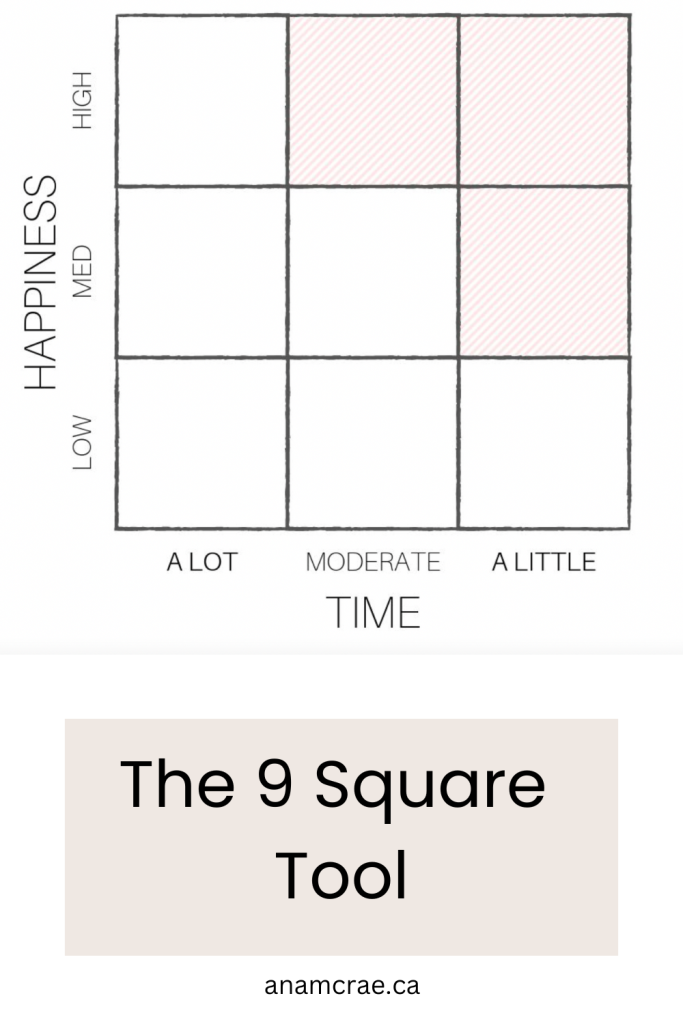How To Prioritize Any List: The 9 Square Tool8 min read
If you have a list of things to do but you don’t know where to start, this article outlines how to prioritize any to do list or list of ideas so that you can maximize your productivity. This article explains the simplest yet most effective prioritization tool and walks you through, step by step, how to use it. This is the best tool for prioritizing any list.
If you’ve ever looked at your to do list and thought ‘I don’t even know where to start‘; if you’ve ever looked at a list of all of the countries you want to travel to in the world and thought ‘I don’t know where I should go first’; if you’ve ever had to make the decision on which project to run first at work; your decision would have been simpler had all of the items on the list been prioritized appropriately.
This is one of the key principles of continuous improvement: ideas in your pipeline should be ranked in order of priority so that at any point that motivation strikes you know exactly what to work on next.
Related post: 10 Tips To Be More Motivated
If you want to make big things happen, you must know your next small step.
ANA MCRAE
In the continuous improvement world we use a tool called a 9 square to prioritize ideas. A company might use this tool to prioritize different projects against financial impact (will this project make the company a lot of money?) and ease of implementation (will a lot of people be affected?).

With my life coaching clients, I like to use this tool to prioritize ideas or potential actions against happiness levels (if I do this, how much happier will I be in the next year?) and time to completion (is this going to drag on and on?)
Theoretically, you could make the axes whatever you wanted. But I find using happiness and time is very helpful when prioritizing what goals should be chased first, what home renovation projects should be taken on first, etc.
If anything is fighting for your time while promising to make your life better, put it on a 9 square!
Rank it against all of the other things fighting for your time and make the best possible decision.
Here is the step by step guide to using this 9 square template to prioritize your personal development plans.
By the way, this is exactly the kind of practical advice and unique tools that I provide my email community with every week to help them achieve their goals and build their dream lives! Grab your copy for free when you join our tribe!

Step One: Brainstorm Everything
In the category that you are using this 9 square for, brainstorm all of the different ideas that you can think of.
For example, if I’m using a 9 square to keep track of things I want to do this year, I might write
- go skydiving
- declutter the kitchen
- take the kids to the park once a week
- start a podcast
Get everything out of your head so that you have visibility to all of the loose ends. This helps clear out head space so that you can use your brainpower for creative problem solving, rather than keeping track of your to do list!
Related post: How To Simplify Your To Do List To The Essentials
Step Two: Assign Axes
What will you be prioritizing against? For my personal life, I usually use happiness as the vertical axis and time as the horizontal axis.
Define those, and then assign specific values to each third of the axis.
For the happiness axis, the bottom would be ‘makes me smile once a month‘ and the top would be ‘makes me smile every day.’ The middle might be ‘makes me smile once a week.‘
For the time to complete axis, I usually use ‘a couple hours‘ for the easiest (far right) section, ‘less than a day’ for the middle section, and ‘multiple days‘ for the hardest (leftmost) section.
This piece is critical to successfully using a 9 square for prioritization. You can’t arbitrarily say ‘high, medium, or low‘ because your placement of the idea/sticky will be biased without concrete numbers to compare against. Make it tangible!
Pro tip: Your axes don’t have to be proportional, but you’ll know you’ve got it right when you’ve got stickies spread across all of the boxes, not all cluttered in one area of the 9 square.
Step Three: Rank Your Ideas
Take all of the ideas that you brainstormed onto sticky notes and move them into the appropriate quadrant.
One at a time, ask ‘how happy will this make me?‘ and then ‘how long will it take to accomplish?‘ and place it in the corresponding square.
When multiple ideas fall in the same square, ask yourself ‘will this idea make me more or less happy than that idea that is already in the square?’ and then place it accordingly.
Sometimes that is easier than starting from scratch with the scales every time.
Take your time on this step.
It can be hard to answer the question ‘how happy will this make me, really?‘ but it is essential to making sure you’re leveraging your time and spending it on the things that matter most.
Related post: 5 Strategies for Better Time Management
And be honest with yourself about how long something is going to take. Often, we give up on our goals because we underestimate the effort required to reach them, so give it some good thought and rank it properly.
If you aren’t sure where you need to focus in your business for the upcoming year take our personalized quiz here!
Step Four: Get Going!
You start with the easiest, most rewarding items (in quadrant one) and get going.
Time block them into your week and start crossing things off the list!
If you aren’t familiar with time blocking, become a pro!
Starting with the easier tasks that give a big boost in happiness provides you with the motivation to tackle some of the more challenging tasks.
Pro tip: Some of your ideas will fall in the difficult section. In order to make them more manageable, break them out into smaller sub goals that might fall toward the easier end of the spectrum so that you can make progress on them.

The 9 square is a great way to prioritize a list of simple ideas in your life and point you in the right direction when you don’t know where to start!
Now, this is not the tool to use when you’ve got a major life decision to make that takes into account five to ten different factors and is really important to you. For that, you will want to use the decision matrix. It’s especially helpful when trying to switch careers.
Also, if your to do list isn’t optimized, prioritizing 100 different things that don’t actually need to get done is ineffective. Simplify your to do list to the essentials before you try to prioritize the things that are in it.
The 9 square really shines when you have a bunch of great ideas and you don’t know where to begin!
If you want to take it a step even further we have a planner that encompasses all of our best products to guide you through your most intentional year yet! Take a look at how the 2025 Intentional Goals Planner can transform your life in the new year.
If you found this post valuable, I would love for you to share it on Pinterest! Together we can inspire more people to create their dream lives.

Related Posts:
- Are You Working On The Right Goals?
- 10 Tips To Stay On Top Of Your Goals
- 3 Personal Development Books To Inspire Growth
What will you use a 9 square for? Let me know in the comments below!








